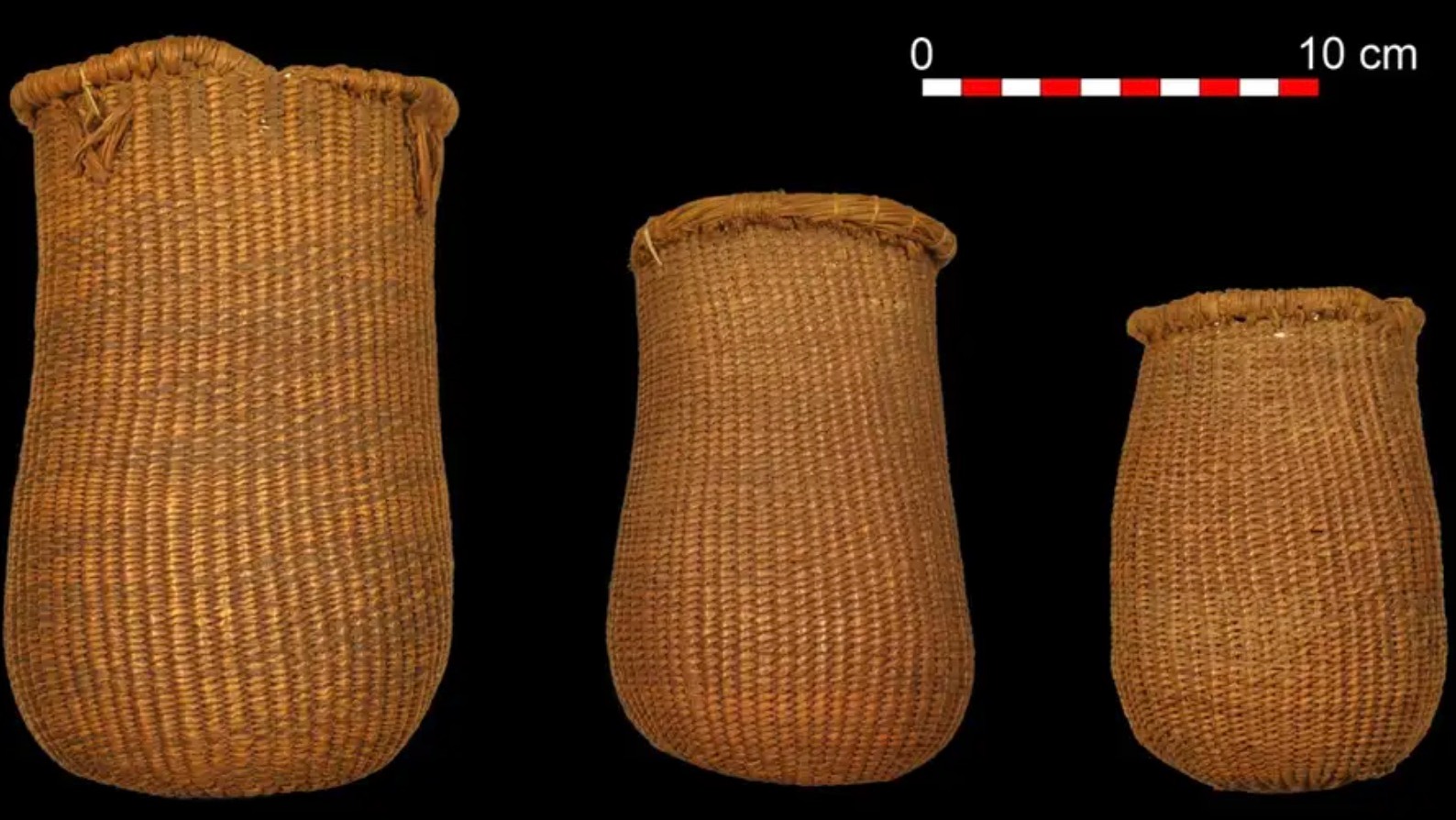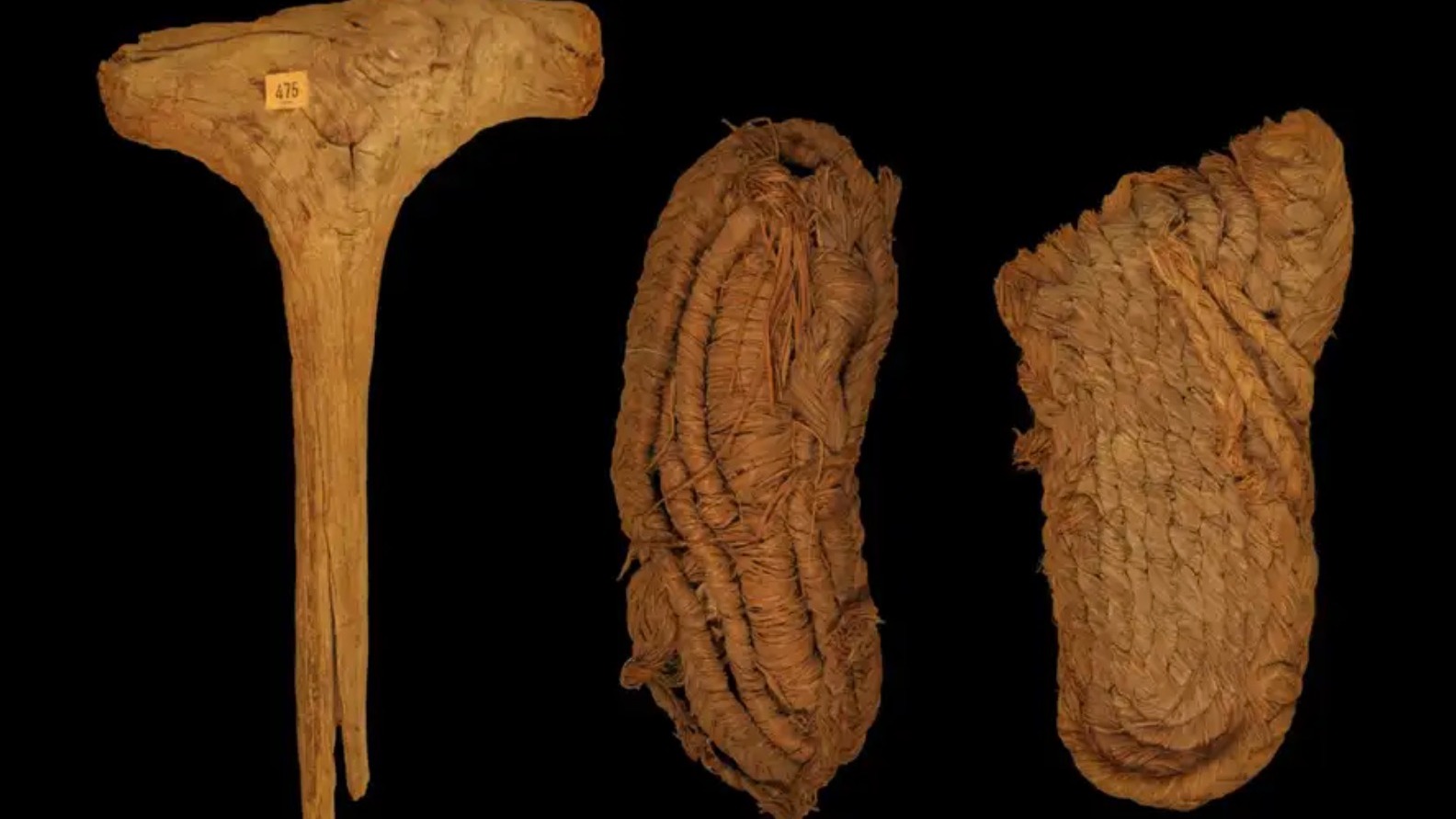9,500-year-old baskets and 6,200-year-old shoes discovered in Spanish bat cave
Radiocarbon dating of woven baskets and sandals found in a cave in Spain make them the oldest artifacts of their kind found in southern Europe.

A collection of baskets and sandals found inside a bat cave in Granada, in southern Spain, were likely crafted by Mesolithic hunter-gatherer societies and are considered some of the oldest artifacts of their kind found in southern Europe, a new study finds.
This summer, archaeologists radiocarbon-dated the artifacts, which are currently housed at the National Archaeological Museum in Madrid. The 76 objects — which were originally discovered by miners working inside the cave system, known as Cueva de los Murciélagos ("Bat Cave"), in the 1800s — were constructed using organic materials such as wood, reeds and esparto (a perennial grass that commonly grows in Spain), according to a study published Sept. 27 in the journal Science Advances.
Researchers determined that the grass sandals were 6,200 years old, making them the oldest known shoes ever found in this part of Europe. The baskets, also made of grass, were even older, at roughly 9,500 years old, and are the "first direct evidence" of baskets being made by Mesolithic, or Middle Stone Age, hunter-gatherers, according to a statement.
Related: Cup crafted from prehistoric human skull discovered in cave in Spain
"The biggest discovery was the age of the baskets — that was a big surprise," lead study author Francisco Martínez-Sevilla, a lecturer in prehistory at the University of Alcalá near Madrid, told Live Science. "Before the arrival of farming, there were hunter-gatherers. In the past, [researchers] thought that basketry was a Neolithic element, but now we know that earlier people were weaving baskets."
The level of detail used to create the baskets was complex for the time, Martínez-Sevilla said, and some of the baskets incorporated intricate geometric decorations, dyed fibers and adornments made using human hairs and pigments.
"Some of the baskets also had leather pieces that were used for hanging them up," Martínez-Sevilla said. "The craftsmanship was very complex."
Sign up for the Live Science daily newsletter now
Get the world’s most fascinating discoveries delivered straight to your inbox.

Despite being thousands of years old, the artifacts were extremely well preserved, possibly due to the cave's layout and low-moisture environment.
"We don't know for sure why this happened, but there are some clues within the cave," Martínez-Sevilla. "Inside there's almost zero humidity, causing the cave to be very dry. There's also a narrow canyon oriented to the north, so you get this dry, cold wind blowing in that enters the upper part of the cave and blows through it. It's the perfect recipe for preserving organic materials."
In addition to the sandals and baskets, the miners found human skeletal remains and tools.
"Some of the human bodies were mummified, and 13 individuals were collected," he said. "We hope to conduct further study to determine their age and sex by radiocarbon-dating their remains in the future."
Jennifer Nalewicki is former Live Science staff writer and Salt Lake City-based journalist whose work has been featured in The New York Times, Smithsonian Magazine, Scientific American, Popular Mechanics and more. She covers several science topics from planet Earth to paleontology and archaeology to health and culture. Prior to freelancing, Jennifer held an Editor role at Time Inc. Jennifer has a bachelor's degree in Journalism from The University of Texas at Austin.










